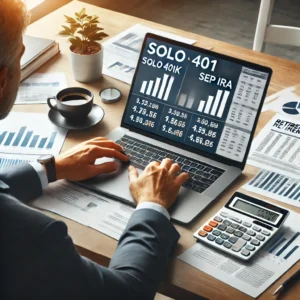If you’re on the internet (which everyone is these days), chances are that you’ve paid for things and will continue to do so. And why not? The internet facilitates billions of dollars in spending every single day and whether you’re paying your energy bills or buying shoes, you’ve probably had to hand over your bank card details, connect to PayPal, or leverage some other means of payment.
In all of this, it is important to keep payment safety at the forefront of your mind. Because while the internet can come with endless options for consumption, there are also dangers to be aware of.
Key Takeaways:
- Buyer payment data is shared at an exponential rate online due to the rise of e-commerce
- This data, however, is targeted by scammers and other criminals
- If it falls into the wrong hands, it can be used for identity theft, funds theft, and even sold on the dark web
- Protecting buyers’ payment data ultimately comes down to sharing it as sparingly as possible and securing all your accounts, both financial and non-financial
- Some options for buyer data safety include blockchain-based platforms, tokenization, strong passwords, and much more.
- While the risks associated with buyer payment data cannot be totally removed, education about these risks and precautionary measures is key.
Buyer Payment Data Risks
So, you’re going about your day on the internet, making purchases and providing your buyer data whenever asked. What could go wrong with this? The truth is that there are several possible issues that could arise:
-
Data Theft
The first thing to remember is that buyer payment data is, at the end of the day, data. And like all data, the more you share it (especially on unsecured platforms) the higher the chances that people will steal it. Major websites with tons of customers are regularly targeted by criminals who want to get their hands on such data,
And as we have seen in the past, there is no shortage of people who will steal or sell user data. On the dark web, for example, there are entire networks of people who buy and sell stolen user buyer data like credit card information and the like. Having your buyer payment data shared carelessly can easily see it fall into the wrong hands.
-
Funds Theft
Another risk when it comes to buyer payment data is users’ funds being stolen. One of the most common cautionary tales online is people being tricked into giving their payment data to scammers online and their bank accounts being emptied. This is because your payment data is also the means through which your financial institutions can identify you. If someone else gets a hold of them, they can access your accounts and steal your money. Sadly, this has been going on for decades and while the methods of acquiring this information have evolved, the end goal largely remains the same.
-
Account Breach
A telltale sign that buyer payment data has fallen into the wrong hands is when the account associated with it has been breached. If criminals do not empty their accounts, they might leverage this power to make unauthorized transactions. It is not unheard of for people’s payment data to be stolen and for random purchases to be made from their accounts. Banks have been warning people about this for years but still, billions are spent annually from the accounts of customers who did not authorize them.
Keeping Buyer Payment Data Safe
Now that you are aware of all the ways that buyer payment data can be misused, it is important that you also know how to stay safe while online.
-
Use Privacy-Centric Systems
Hypothetically, the easier way to keep your buyer payment data safe would be to give it out as little as possible. This would mean prioritizing systems that are privacy-centric i.e. ask for as little of your information as possible. A good example of this would be cryptocurrency and blockchain-focused platforms for things such as gambling. Usually, when you sign up for a gambling platform, you have to supply a lot of sensitive information, including payment data. But many crypto casinos only need a wallet to be connected before use and nothing else. As Kane Pepi explains, many consumers are finding no kyc casinos for privacy reasons and this could be an option for you as well. The more blockchain options get adopted on mainstream websites, the simpler the registration process will be, while enabling people to submit less delicate data.
-
Use Secure Gateways
Companies in the digital economy are aware of the risks of buyer payment data and the anxieties that consumers have. This is why website and data encryption standards such as SSL and TLS exist. These mean that when you put your payment data into a website for a purchase, the transaction is facilitated but the platform cannot actually see their details (which means that there is less chance of theft). When using websites, especially to make purchases, look out for their encryption certificate or the lock icon on your browser. These indicate that the site is encrypted and thus, safe to use.
-
Two-Factor Authentification
When signing up for any platform, make sure to enable two-factor authentication if possible. This means that before transactions are completed, your identity will be verified again. Common ways these are done include a code being sent to your email address or phone number. While this adds yet another step to the buying process, it makes sure that unauthorized purchases are less likely to go through and your account is essentially re-verified every time you complete a transaction.
-
Strong Passwords
It goes without saying at this point but all your accounts should be secured with strong passwords. We take them for granted now but passwords are the first line of defense against payment data being stolen or misused. Someone trying to gain access to your Amazon or PayPal account, for example, will first have to get your password and this can prevent or delay such attacks. So, make sure your passwords are as complex as possible (do not use things like ‘12345’ as your password) while also being simple enough for you to remember. Password managers and fingerprint/facial recognition access can also go a long way in keeping you safe online.
-
Tokenization
One payment method that has become increasingly popular is tokenization. This essentially involves converting payment information to a string of random numbers and letters, which is then used to complete the transaction. Tokenization is available on certain websites and if you see that this is an option, it is best that you opt for it. The benefit of tokenization is that by providing the token code that your payment provider gives you, you don’t have to give out your actual payment information.
-
Respond Immediately to Suspicious Activity
Even with our best efforts, payment data may still fall into the wrong hands and if this happens, we have to act quickly. As your bank will tell you, you have to respond to any suspicious activity as soon as you notice it. Has a payment been made to a website you don’t remember ordering from? Freeze your card while you figure it out. Has your account been reportedly part of a data breach? Change your password immediately. Is there a login to your account in a location you haven’t been in? Inform your account provider. As a rule, it is better to be too cautious than not cautious enough.
-
Stay Educated About Payment Safety
The frustrating thing about payment data misuse is that attempts never stop, and criminals only refine their methods with time. Years ago, phishing emails were the most common method to steal data. Then came the fake iPhone giveaway scam, PayPal scams, and others. As inconvenient as it is, you’ll have to stay abreast of all of these different methods and the ways to prevent them. Subscribe to a few websites or newsletters about cyber safety and pay special attention to financial safety. The sooner you know about these schemes and how they work, the better.
-
Use Disposable Payment Methods
One of the best new innovations for protecting buyer payment data is disposable payment methods. These include disposable debit cards that you can prepay with money for things like subscriptions, shopping, travel, and much more and are separate from your main bank accounts. These payment methods create a buffer so that if they are compromised, the amount of money available for theft is much lower and your main funds are safe. Plus, they can be a way to regulate spending online, so definitely consider them.
FAQ
-
What is buyers’ payment data?
This refers to consumers’ financial institution details like their account numbers, credit/debit card details, and much more.
-
Are there risks with sharing buyers’ payment data?
This data can be leaked or used by malicious parties for identity theft, funds theft, and completing unauthorised transactions.
-
How can you keep buyers’ payment data safe?
You can keep your buyers’ payment data by only using verified and encrypted websites, using strong passwords, leveraging privacy-centric systems, tokenization, and much more.










